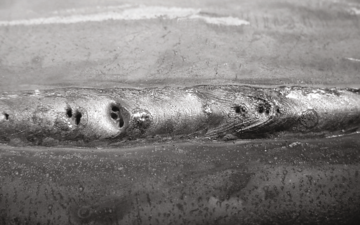Porosity in Welding: Identifying Common Issues and Implementing Best Practices for Prevention
Porosity in welding is a pervasive problem that often goes undetected up until it causes considerable issues with the stability of welds. In this discussion, we will certainly check out the crucial aspects contributing to porosity development, analyze its destructive effects on weld performance, and talk about the finest methods that can be taken on to reduce porosity incident in welding processes.
Typical Reasons For Porosity

Making use of unclean or wet filler materials can present pollutants into the weld, contributing to porosity concerns. To reduce these usual reasons of porosity, extensive cleansing of base metals, correct securing gas choice, and adherence to optimal welding specifications are important practices in accomplishing high-grade, porosity-free welds.
Effect of Porosity on Weld Top Quality

The visibility of porosity in welding can substantially compromise the structural integrity and mechanical residential or commercial properties of welded joints. Porosity creates voids within the weld metal, damaging its total strength and load-bearing capability. These gaps work as tension focus factors, making the weld extra vulnerable to breaking and failing under used lots. Additionally, porosity can lower the weld's resistance to deterioration and other environmental elements, better decreasing its longevity and efficiency.
Welds with high porosity levels tend to show lower impact toughness and decreased capacity to flaw plastically before fracturing. Porosity Bonuses can hamper the weld's capacity to efficiently transfer pressures, leading to premature weld failing and prospective safety and security dangers in critical structures.
Finest Practices for Porosity Avoidance
To boost the structural stability and top quality of bonded joints, what particular procedures can be carried out to minimize the incident of porosity throughout the welding procedure? Using the appropriate welding method for the particular product being welded, such as readjusting the welding angle and gun placement, can additionally prevent porosity. Normal examination of welds and instant removal of any concerns identified throughout the welding process are necessary practices to stop porosity and produce high-grade welds.
Significance of Correct Welding Techniques
Applying proper welding techniques is paramount helpful site in guaranteeing the structural integrity and high quality of welded joints, developing upon the structure of efficient porosity avoidance procedures. Excessive heat can lead to enhanced porosity due to the entrapment of gases in the weld swimming pool. Furthermore, utilizing the appropriate welding criteria, such as voltage, existing, and travel rate, is vital for accomplishing audio welds with very little porosity.
Furthermore, the selection of welding procedure, whether it be MIG, TIG, or stick welding, should line up with the details needs of the job to guarantee optimal outcomes. Correct cleansing and prep work of the base metal, as well as picking the ideal filler product, are likewise necessary components of efficient welding methods. By sticking to click for info these best methods, welders can lessen the threat of porosity formation and create high-grade, structurally sound welds.

Evaluating and Quality Assurance Measures
Examining procedures are crucial to discover and prevent porosity in welding, making sure the strength and durability of the last product. Non-destructive testing approaches such as ultrasonic testing, radiographic testing, and aesthetic evaluation are frequently employed to determine prospective flaws like porosity.
Post-weld inspections, on the various other hand, evaluate the last weld for any kind of flaws, consisting of porosity, and verify that it meets specified criteria. Applying a detailed top quality control plan that consists of extensive screening treatments and inspections is vital to lowering porosity concerns and making certain the general quality of bonded joints.
Verdict
To conclude, porosity in welding can be a common concern that affects the quality of welds. By recognizing the typical sources of porosity and applying finest practices for avoidance, such as proper welding strategies and screening measures, welders can make certain premium quality and dependable welds. It is essential to focus on prevention techniques to minimize the incident of porosity and preserve the stability of welded frameworks.